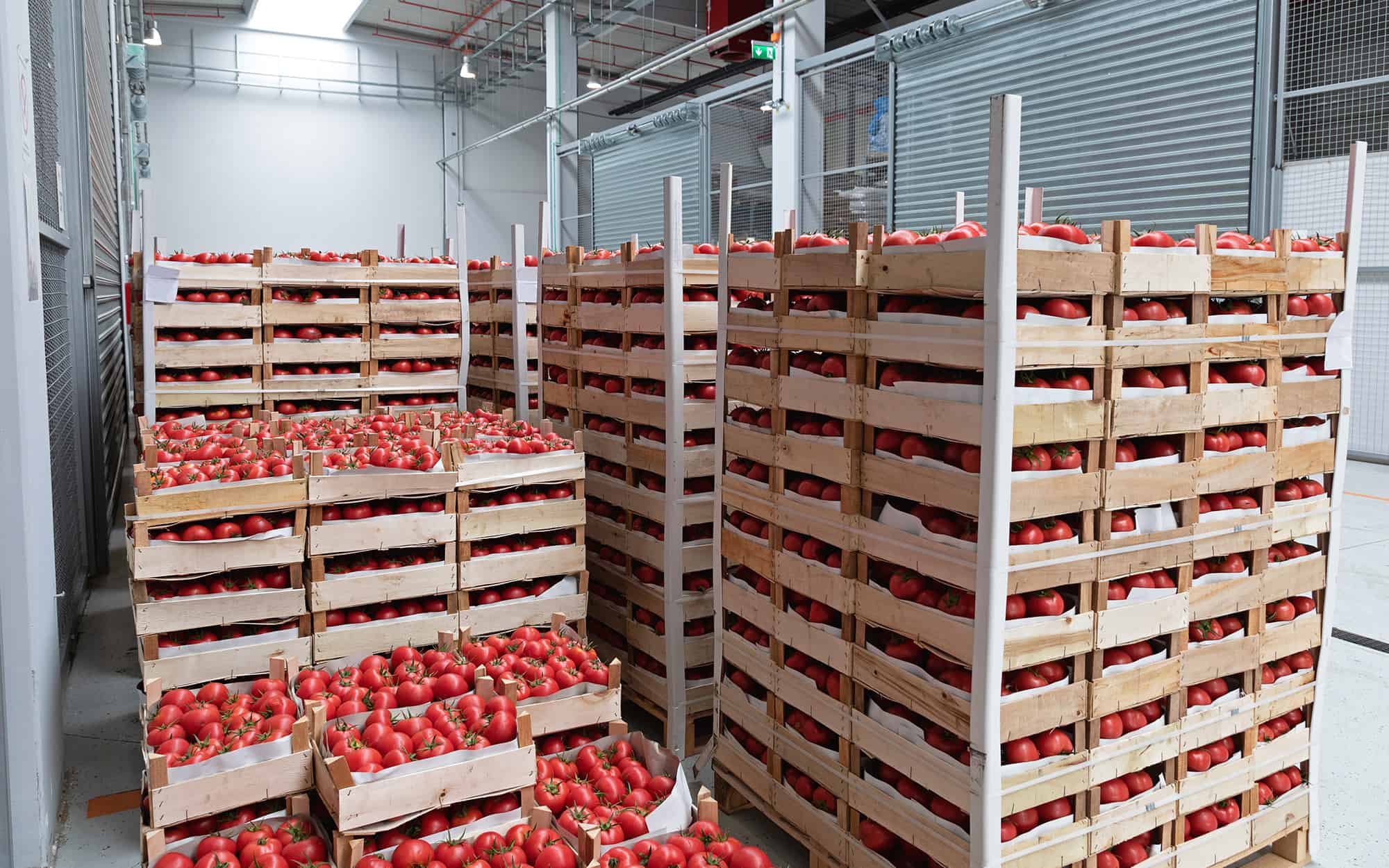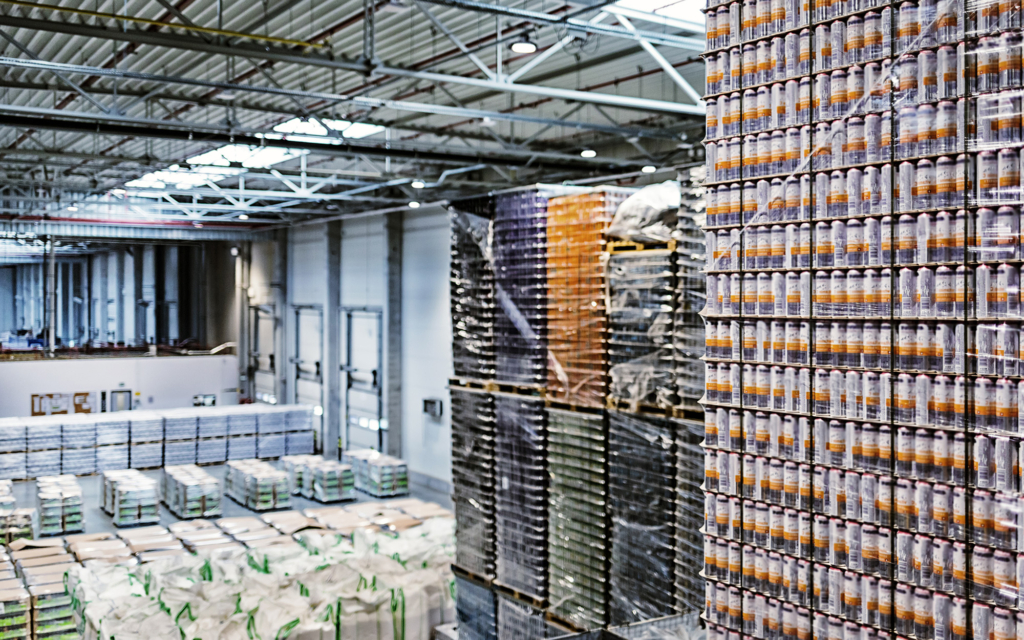
From the integrity of the food products to their overall freshness, packaging plays a critical role in food-grade warehousing, prompting the need for careful consideration and adherence to a series of regulatory standards. In this blog, we will explore the importance of proper packaging in food-grade warehouses, highlight the key factors to consider in packaging, and discuss strategies to overcome commonly associated challenges. By focusing on material selection, precise labeling, and optimizing preservation methods like vacuum sealing, we will provide insights into enhancing packaging efficiency in a food-grade warehouse.
The Role of Food Packaging
Food packaging serves several essential functions in the modern food supply chain. It is not just about enclosing food items in a container; it plays a multifaceted role, including:
Protection
Food packaging acts as a protective shield, guarding products against physical damage, contamination, and environmental factors. It prevents the entry of harmful microorganisms, dust, and foreign materials that could compromise the quality and safety of the food.
Preservation
Packaging materials are designed to extend the shelf life of food by minimizing exposure to air, light, and moisture, which can lead to spoilage and degradation. Proper packaging helps maintain the product’s flavor, aroma, texture, and nutritional value.
Information
Labels on packaging provide critical information to consumers, such as nutritional content, ingredients, expiration dates, and preparation instructions. These labels assist customers in making informed choices and ensuring food safety.
Branding
Packaging is an essential element of a brand’s identity. It communicates the brand’s values, image, and message to consumers. Attractive and well-designed packaging can differentiate a product in a crowded market.
Convenience
Packaging should facilitate easy handling, storage, and transportation of food products. Convenience features like resealable bags, portion control, and microwave-safe containers enhance the consumer experience.
Food Packaging Challenges in Warehousing
In the food-grade warehouse industry, packaging faces specific challenges that must be addressed to maintain product integrity throughout storage and shipment:
Temperature Control
Temperature control is a paramount concern in food warehousing. Certain foods, such as fresh produce, dairy products, and frozen goods, require specific temperature ranges to preserve freshness and safety. Packaging must insulate products effectively to maintain the required temperature during storage and shipment.
Moisture Resistance
Excess moisture can lead to mold growth, spoilage, and reduced product quality. Packaging should provide a barrier against moisture, especially for items that are sensitive to humidity.
Contamination Prevention
Warehouses can be exposed to various contaminants, including dust, insects, and rodents. Packaging should prevent the entry of such pollutants, ensuring the safety and quality of the stored food.
Stackability and Durability
Efficient use of space is essential in food warehouses. Packaging should be designed for easy stacking without damaging the contents. Moreover, it needs to withstand the rigors of transportation and handling.
Sustainability
The environmental impact of food packaging is an increasingly important consideration. Sustainable packaging options that reduce waste, use eco-friendly materials, and are easily recyclable are gaining popularity.
Common Packaging Solutions for Food Warehousing
To address these challenges and maintain food integrity in warehousing, several packaging solutions are available:
Insulated Packaging
For temperature-sensitive products, insulated packaging materials like foam coolers, refrigerated shipping containers, and vacuum-insulated panels are used to maintain the required temperature during storage and shipment.
Barrier Films
Barrier films protect food against moisture, oxygen, and UV light. They are commonly used for snacks, dry goods, and coffee. These films prevent spoilage and maintain freshness.
Tamper-Evident Seals
Tamper-evident seals provide consumers security and peace of mind by showing if the packaging has been compromised. These are crucial for perishable items like dairy and meat products.
Palletizing and Stretch Wrapping
Efficient use of warehouse space is achieved through proper palletizing and stretch wrapping. This helps maintain product integrity by preventing damage during storage and transportation.
Eco-Friendly Packaging
Many food companies are adopting sustainable packaging options in response to growing environmental concerns. This includes using recyclable materials, reducing single-use plastics, and designing packaging for easy recycling.
Best Practices in Food Warehousing Packaging
To ensure the integrity of food products throughout their journey, food warehouses should adhere to these best practices:
Adherence to Regulations
Food packaging should comply with relevant regulations and standards, including food safety, labeling, and environmental impact. Non-compliance can result in legal issues and consumer mistrust.
Quality Control
Regular quality checks of packaging materials are essential. Ensure that the packaging does not have defects or damage that could compromise the product inside.
FIFO (First-In, First-Out) System
Implement a FIFO system to ensure products with shorter shelf life are used or shipped first. This minimizes the chances of product spoilage.
Hygiene and Sanitation
Maintain a clean and sanitized warehouse environment to prevent contamination. Regularly cleaning storage areas and handling equipment and packaging materials is crucial.
Training
Train warehouse staff in proper handling and storage of food products. Ensure they understand the significance of packaging in preserving food quality.
Inventory Management
Implement efficient inventory management systems to track product shelf life and manage stock levels effectively. This minimizes the risk of expired products.
Traceability
Establish a traceability system that allows easy tracking of products from the warehouse to the customer. This aids in identifying and recalling products in case of quality issues.
Our Food Packaging Process
FW Warehousing meets the needs of our clients by sticking to our end-to-end process. Learn more about our solutions.
FW Logistics: Providing Industry-Leading Food Grade Warehouse Solutions for Over 70 Years
FW Logistics is your partner for food-safe warehousing solutions. Our team handles food storage with diligence, providing cost-effective cold storage, dry storage, and temperature-controlled options for food and beverage products. Manufacturers trust us to maintain product safety and quality during storage and distribution. With warehouses across the Midwest, we make nationwide shipping easy. Choose FW Logistics for reliable, specialized warehousing that keeps your supply chain running smoothly from storage to shipment, wherever your products need to go.


